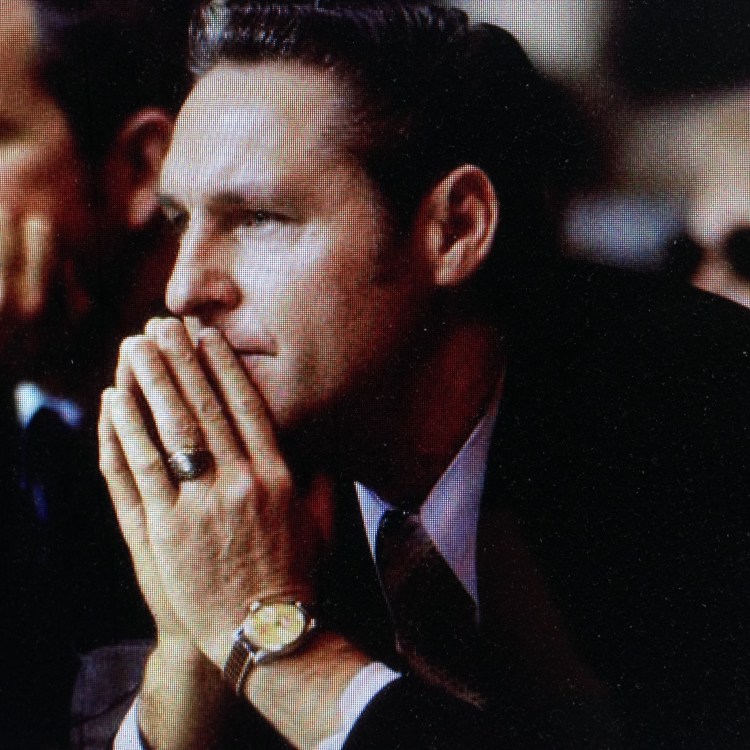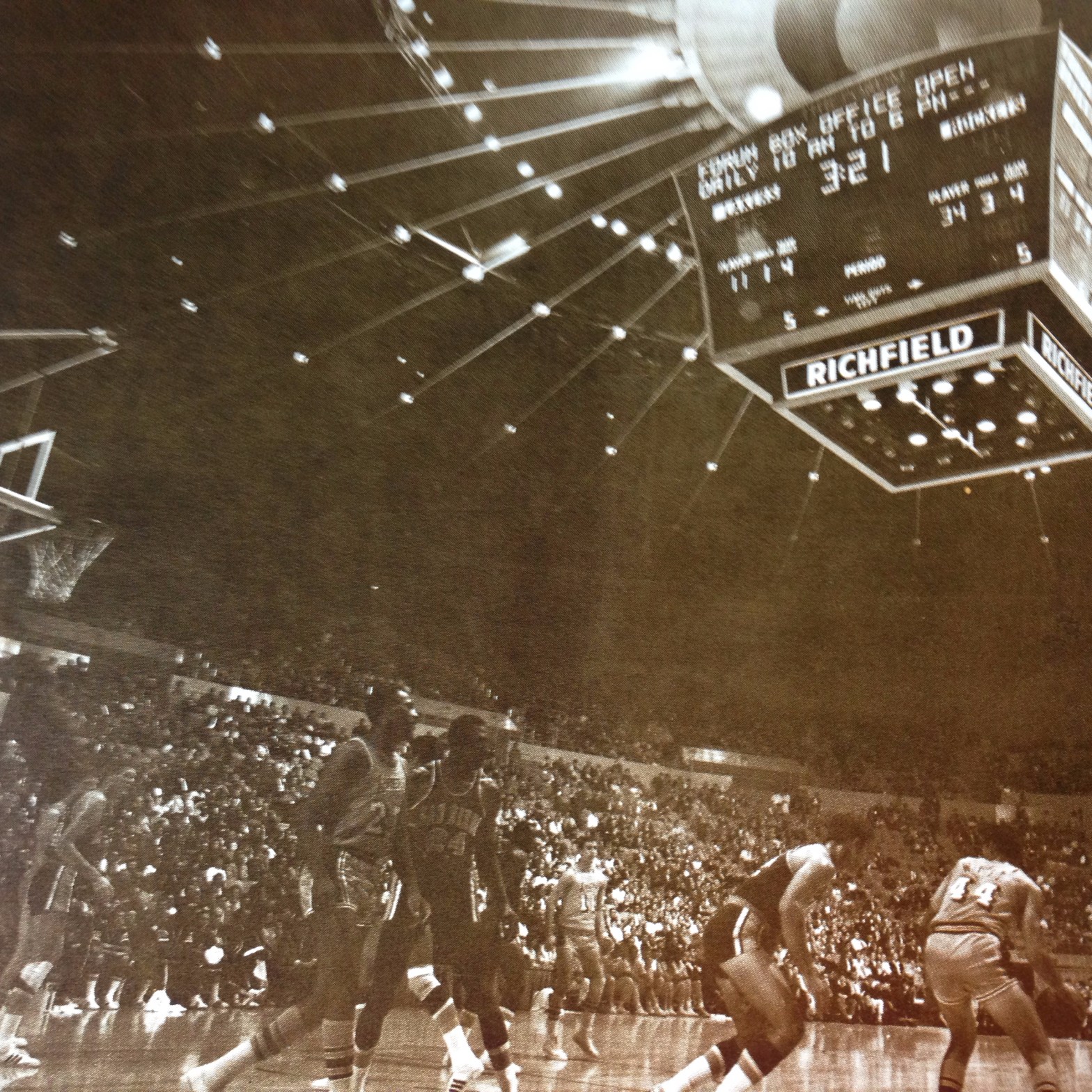[Many basketball historians acknowledge that the early NBA, roughly defined as 1947 to the mid-1960s (or before the first wave of NBA expansion), had its bush-league qualities. They are quick to point out, however, that the NBA back then was “a real man’s league.” All the greats were distilled into just eight NBA warring franchises, and nobody had the luxury to take a night off and coast against a weak opponent.
Sounds reasonable. Well, this article knocks that time-tested argument a little sideways. It asserts that back in the NBA day, most players were generally smaller, slower, and their skills more rudimentary. By the late 1960s and into the 1970s, the NBA inherited a new generation of talent that had seemingly grown up on a basketball court, shooting jump shots, not set shots, and dribbling between their legs and around their backs better than Bob Cousy. These Baby Boomers were noticeably bigger, taller, stronger, faster, and more creative with the shot clock winding down. What’s more, the nation’s colleges were churning out enough of these talented Boomers to stock 20 NBA teams.
Whose pushing this counter-narrative? Quite an impressive list of early NBA greats: Bill Sharman, George Mikan, Joe Fulks, Elgin Baylor, Al Bianchi, and Jerry Lucas. Take a look for yourself in this article from Cord SportsFacts’ Pro Basketball Guide 1973. It comes with no byline.]

Somewhere near the end of last season—and it was a very enjoyable season for him, despite a persistent attack of laryngitis—Bill Sharman managed to whisper the kind of platitude you get to expect from a happy coach.
In essence, Sharman called his Los Angeles duo of Jerry West and Gail Goodrich the best backcourt combination in the history of basketball. “They complement each other so well,” Sharman said. “They’re the highest scorers ever for a backcourt team, they’re good passers, and they play excellent defense.”
It was easy to understand the reasons for Sharman’s sentiments. The Lakers had put together an unprecedented 33-game winning streak, won an all-time record 69 games (against only 13 losses) and went on to capture their first National Basketball Association championship since the franchise moved from Minneapolis in 1960, the same year West joined the team.
Goodrich, who had undergone a rigorous running program the previous summer to prepare himself for the long grind of an NBA season, played in all 82 games for the Lakers, led the team in scoring with a 25.9 average—fifth best in the league—and had 365 assists. West was just behind his younger partner in scoring with a 25.8 norm, and he led the league in assists with a 9.7 average.
And so, in his natural enthusiasm, Sharman called them the best ever. A predictable statement from a coach. Except, in this case, it caused some eyebrows to rise. For there are many basketball fans who consider that Sharman himself was part of the best-ever backcourt duo when he teamed with Bob Cousy during all those glory years at Boston.
“Jerry and Gail are better than we were,” Sharman said, making his point as clear as possible. “They’re the two best guards at either end of the court who ever played this game.”
Old-timers with hard-dying beliefs will have to accept this statement from the man who probably knows best, just as they will have to accept the idea that the abilities of today’s players are improving at an incredibly quick rate. Modern players have bigger, stronger, and more flexible bodies than their predecessors; they can shoot better, jump higher, and run faster.
“In my 10 years in the NBA, the game has changed no end and the ability of new players has improved immensely,” said Jerry Lucas of the New York Knickerbockers. “This is because they’re probably getting better training at an earlier age from coaches who are more knowledgeable. There are more and more players at all levels, and obviously the stronger the competition a youngster comes across, the better he is going to develop.”
Let’s travel back a little—just a moment in terms of history, but a lifetime in the evolution of basketball—to 1946, the year when pro basketball made its first serious impact on this country with the creation of the Basketball Association of America (BAA). The All-Star team that season consisted of Joe Fulks of Philadelphia, Stan Miasek of Detroit, Max Zaslofsky of Chicago, and Bob Feerick and Bones McKinney of Washington.
Fulks was the only member of that unit to average better than 20 points a game, hitting at a 23.2 clip to lead the league, and McKinney was the tallest player at 6-foot-6. Only Miasek, at 210, scaled more than 200 pounds.
True, there was no 24-second clock at the time, and teams often played slowdown ball to protect the lead, thus accounting for a lot less scoring than is prevalent today. But a look at other statistics can be revealing. For example, despite the fact that teams had as long as they wanted to set up a good shot, Feerick led the BAA in field goal percentage with what is now considered a poor .401 mark. Ed Sadowski of Cleveland was a distant runner-up at .369, and Earl Shannon of Providence was even another 30 points further back in third place at .339.
In contrast, Wilt Chamberlain of the Lakers led the NBA in field goal percentage last season with a .649 mark, and Cleveland, a weak, second-year club, had the lowest team percentage of .428—still 27 points better than the individual leader of 26 years ago.
“Today’s ballplayer can do so many more things than we could do in my day,” admitted Fulks. “A person 6-foot-7 or 6-foot-8 can do what a player of 6-foot-3 or 6-foot-4 did then.”
Oddly, it was the forerunner of the current Los Angeles team that dominated the old pro leagues from its base in Minneapolis. The Lakers of that era were led by the game’s first “giant,” George Mikan, a mammoth 6-foot-10, 245-pounder. His intimidating frontcourt partners were 6-foot-7 Vern Mikkelsen and 6-foot-3 Jim Pollard.
“I look at the game now and realize there are so many more good players,” said Mikan, who led the league in scoring three times and twice was runner-up. “The depth of each team is where you can see the difference. We had some great players in my day, too, but now you can go down to the 10th man on the roster and still find talent.”

Elgin Baylor and Al Bianchi, two men whose playing careers spanned some of the developing years of basketball, have seen the great change.
“When I first started there were only eight teams, and most of those clubs had only two or three outstanding players. The other eight men on the team were mediocre,” said Baylor, who joined the Minneapolis Lakers in 1958. “Now there are more than two dozen teams in the two leagues in most of the clubs had depth up and down their lineup.
“The players of today can do everything better than when I started 14 years ago. You guys couldn’t jump the way even bigger men jump now, and each year it seems that the shooting gets better. I don’t know the reason for this, although I expect that maybe kids are more interested now in basketball, they start playing at a younger age and have more facilities.”
Baylor said he never saw the old Lakers play during their dynasty years, but added, “It’s pretty obvious they couldn’t compete with the better teams of today.”
Bianchi, always a hard-nosed competitor who broke in with the old Syracuse Nationals in 1956 and currently coaches the Virginia Squires of the ABA, sees the change as “a nature evolution.”
“Physically, the players are much bigger now, and they’re also much more agile,” said Bianchi. “Years ago, we used more muscle and we also had to be more cute in setting up for a shot. The players now jump higher, run faster, and shoot better. There’s no need any longer to be cute.
“You didn’t see too many 6-foot-5 guys in my day who could dribble the ball very well. Now you get a guy like Julius Erving, a 6-foot-6, 200-pounder who starred for the Squires last season. He jumps like a seven-footer and dribbles like a six-footer. Everyone is so much quicker now.”
Lucas says he can see the change on a team level, as well as the individual improvement. “Ten years ago, the NBA was more a run-and-shoot, one-on-one game,” he said. “Everyone shot the ball, they thought of themselves, and there wasn’t the good team defense you have now. Defenses have become much more sophisticated, and the players have helped themselves to become better defensively, in addition to improving their offensive games.
“Teams play together more now, and there are more individuals with a lot more ability. They do everything better today than they did 10 years ago and, 10 years from now, I think they will be better still. This game will continue to improve as youngsters get more exposure and better training.”
Despite the evolution toward bigger players, Lucas said the trend of the last decade has been to use one smaller forward. “A few years ago, for example, you had men such as Willis Reed, Luke Jackson, Nate Thurmond, and Wayne Hightower playing forward,” Lucas explained. “I weighed 250 pounds then, and I had to be that heavy to play against these men. Now look at some of your forwards. Bill Bradley is a small forward, so are the Van Arsdales.
“Look at the roster of any team. Whereas before they liked to get the two biggest, strongest players they could at forward, now they like one big forward and a smaller, quick man to team with him. I imagine one day that a bright coach said to himself, ‘Hey, if I get a small, quick guy at forward, maybe the big guy playing against him won’t be able to keep up.’ This is what happened, and this is where a 6-foot-5 guy like Jim McMillian fits in. When other coaches saw their big guy couldn’t keep up with the smaller one, they had to counteract by putting a small guy in against that other small guy, and this is how it all evolved.”
At center, though, the sky is still the limit, as teams continue to seek the heightened ability that can create an instant champion, such as Kareem Abdul-Jabbar did at Milwaukee. A seven-footer no longer is a status symbol, but almost a necessity.
If the present trend in size and ability continues, basketball in the 1980s will indeed be a wonder to behold.
